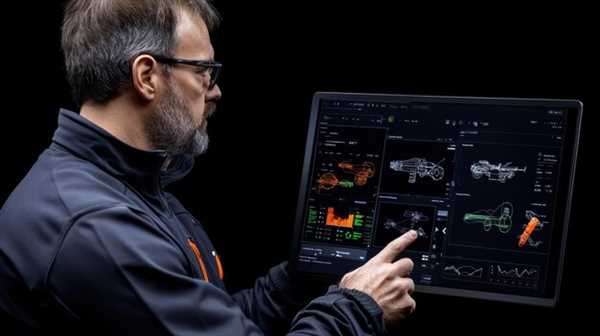
To gain a competitive edge, implement a robust framework that integrates real-time feedback with historical performance metrics. Utilize telemetry data to track vehicle dynamics during laps, focusing on tire performance and fuel efficiency. This will provide clarity on optimal pit stops and lap strategies.
Employ machine learning algorithms to identify patterns in driver behavior and track conditions. By analyzing previous races, teams can forecast potential optimizations, allowing them to anticipate rival tactics and adjust their approach accordingly. Harnessing this predictive power can significantly enhance decision-making during critical moments.
Encourage collaboration among engineers and drivers; this synergy is crucial for refining setups. Constant communication allows for immediate adjustments based on driver feedback, which translates to faster lap times. Implement visualization tools to present data intuitively, enabling quick comprehension and actionable insights for the entire team.
Utilizing Telemetry Data for Performance Optimization

Analyze track position data to determine optimal racing lines. Use telemetry to assess throttle application and braking points for maximum speed through corners.
Monitor tire performance using temperature and pressure metrics. Adjust tire pressure during pit stops to ensure optimal grip and longevity throughout the race.
Evaluate engine performance by analyzing RPM and throttle inputs. Fine-tune mappings to achieve better power delivery and efficiency, tailoring settings based on specific track characteristics.
Utilize aerodynamic data to tweak wing settings. By assessing the balance of downforce and drag, teams can enhance stability and straight-line speed, adapting to varying circuit layouts.
Assess suspension parameters through telemetry to find an ideal setup. Gathering data on ride height and damping will inform necessary changes for improved handling and driver comfort on diverse terrains.
Implement real-time feedback for drivers using telemetry insights during practice sessions. Provide instant data on performance, enabling immediate adjustments for improved lap times.
Predictive Analytics in Race Strategy Development

Implement a robust forecasting model that integrates variables like weather conditions, tire wear, and opponent performance to optimize decision-making during competitions. Utilizing historical performance metrics allows for precise predictions of tire degradation and fuel consumption, creating scenarios to evaluate pit stop timings.
Focus on real-time telemetry data to inform split-second decisions on track. This includes monitoring engine temperatures, fuel levels, and aerodynamic efficiency. Short-term forecasts can adjust race approaches dynamically, enabling teams to respond promptly to race developments.
Conduct simulations under various race conditions to identify ideal setups and strategic options. By evaluating past events through statistical models, anticipate potential incidents and develop contingency plans. This proactive approach enhances adaptability and mitigates risks associated with unexpected race dynamics.
Collaboration with driver feedback is vital; merge insights from the cockpit with performance analytics to refine vehicle setups. Regularly reassess the predictive models based on new data to ensure continuous improvement and accuracy in forecasts.
Utilize advanced machine learning algorithms to identify patterns in competitor behavior, enhancing tactical planning against adversaries. Keeping an eye on rivals’ paces and strategies through comparative studies can provide a competitive edge and inform your plans effectively.
Real-Time Data Monitoring for Competitive Advantage
Utilize telemetry systems to capture performance metrics during events. Implement sensors to track tire pressure, engine temperature, and aerodynamic efficiency continuously. Analyzing this information instantly allows for timely adjustments, enhancing vehicle handling and efficiency on the track.
Integrate cloud-based platforms for seamless data sharing among team members. This fosters collaboration in real time, ensuring that engineers and drivers respond quickly to changing conditions. For example, if tire degradation is detected, quick decisions can be made regarding pit stops or adjustments in driving style.
Leverage predictive modeling tools to anticipate how changes in weather or track conditions may impact vehicle behavior. This approach allows teams to prepare for scenarios ahead of time, gaining a tactical edge over competitors.
Establish a dashboard that visualizes key performance indicators in real time. Essential metrics should include lap times, fuel consumption, and tire performance. This visual representation can enhance situational awareness and enable rapid decision-making.
Implement machine learning algorithms to analyze past performance data, identifying patterns that can inform real-time strategy adjustments during races. For instance, recognizing successful strategies from previous circuits can guide current decisions, maximizing competitive positioning.
Use mobile devices for instant access to telemetry data, allowing drivers to receive feedback while on the track. This immediacy can help them tweak their techniques mid-race, reinforcing their adaptability and responsiveness to dynamic situations.


